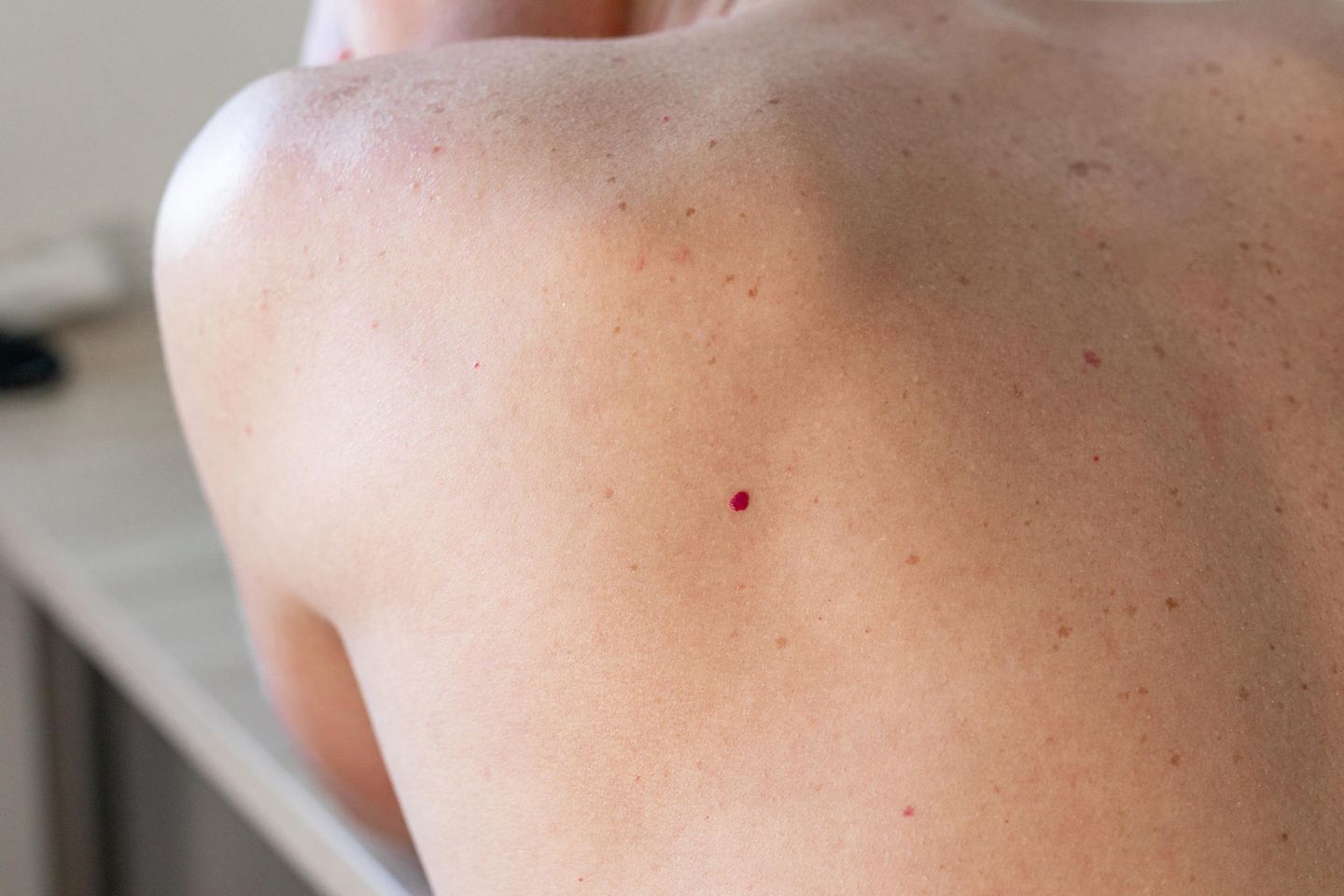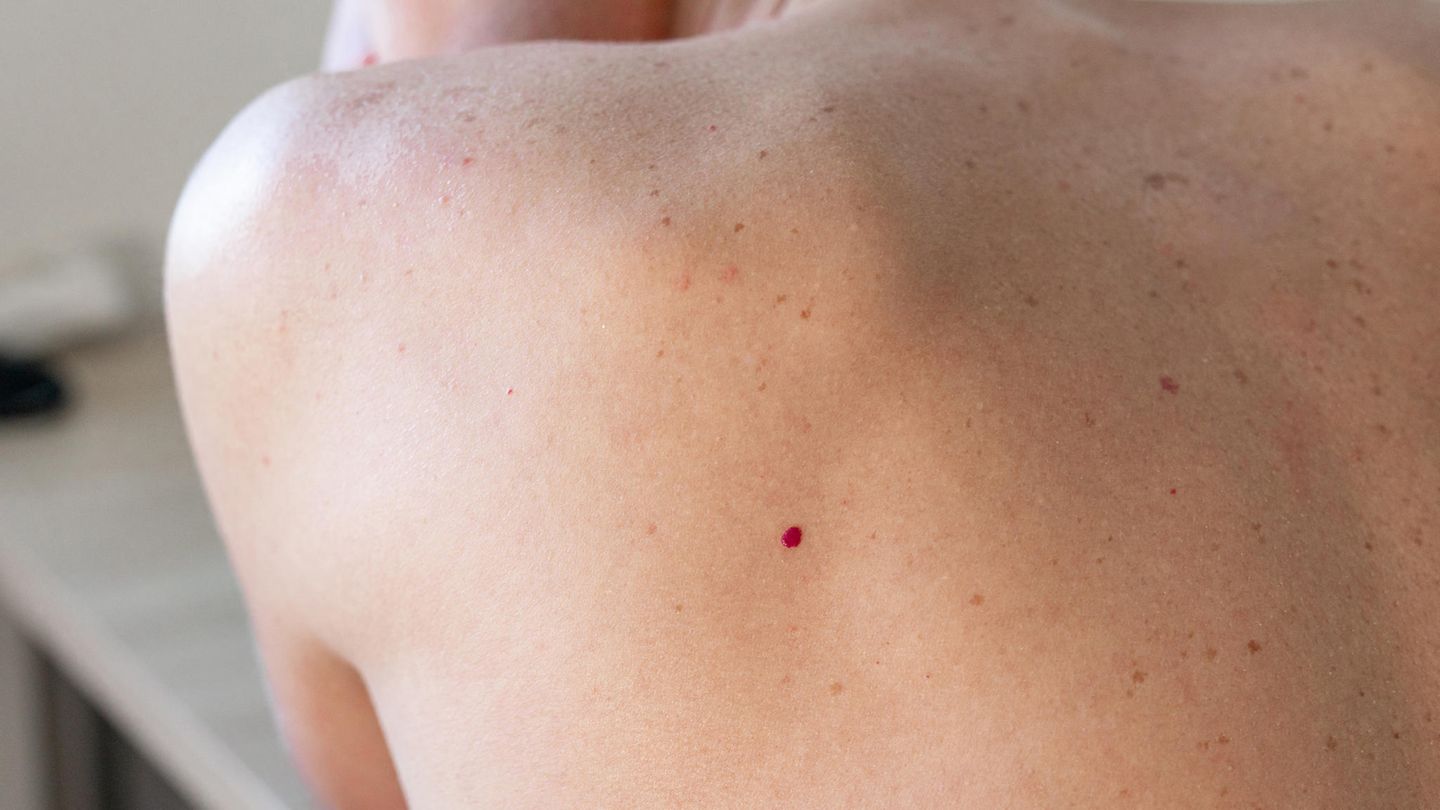ruby spots
Are the little red dots on the skin dangerous?

© Olya / Adobe Stock
Do you have small reddish dots on your skin? That could be ruby spots! Here we explain what is behind it and whether it can be dangerous.
Do you also check your skin more often for possible changes? Then you may have noticed small reddish dots on it. These could be so-called ruby spots. The small vascular proliferations are often referred to as cherry angiomas because of their color. Doctors usually speak of hemangiomas or blood sponges. But what is behind it?
What are Ruby Spots?
Ruby spots appear in most people later in life, especially on the upper body. But other skin areas can also be affected. The pinhead to pea-sized dots are among the most common skin changes and are often conspicuous because of their cherry red color. They develop due to vascular dilatations under the skin – this is also referred to as so-called vascular loops in the blood vessels. Initially, they are rather flat and sharply defined, but increased blood collects in the vascular loops. As a result, the ruby spots enlarge over time and can become knotty.
Other names for ruby spots
Ruby spots really go by a variety of names. They are also known by the following names:
- Tardive hemangiomas because they only appear over time (tardive means slow and hesitant development).
- Senile angiomas, as their number increases as we get older. However There is also a genetic predisposition to ruby spots. In these cases, the hemangiomas also appear earlier.
Are Ruby Stains Dangerous?
As a rule, ruby stains are completely harmless. Unlike other skin lesions, nodules are not itchy or painful and can simply be considered a normal age-related skin lesion. So you don’t necessarily have to have them checked out by a dermatologist. However, it can happen that blood clots form in the vascular loops, for example due to an injury. As a result, the ruby spots sometimes become darker, sometimes even turning completely black. In these cases or if you notice general changes in the spots, it makes sense to consult your doctor.
What can I do about the red dots on the skin?
Since the ruby stains are harmless as I said, it is not absolutely necessary to remove them. However, if injuries occur more frequently, for example because the nodules are larger or they are simply aesthetically disturbing, you can use certain procedures to get rid of them. Treatment with a laser or what is known as punching is suitable for this purpose, for example. The cost of removing a blood sponge usually has to be borne by yourself. In addition, visible scars often remain afterwards – so you should think twice about removing them for aesthetic reasons.
Reading tip:Red spots on the skin do not necessarily have to be blood sponges, but can also have other reasons. You can find out more here.
Sources
- Herdegen, T. et al.: Short textbook on pharmacology and toxicology, Georg Thieme Verlag, 4th edition, 2019
- Altmeyer, P.: Encyclopedia of Dermatology, Venereology, Allergology, Environmental Medicine. Springer, Berlin 2010

